You’ve seen the endless slow-motion YouTube videos of ballistic gel being shot.
Odds are you’ve probably also read more than a few charts regarding penetration depth and wound cavity as measured in gel. Do you put much store in what’s reported or do you dismiss it?
It’s true that ballistic gel isn’t an exact replica of the human body but it’s a fair mimic of human tissue.
And if you drape a cloth over it you can get a decent idea of how a specific bullet will penetrate different types of material and thicknesses before going on to penetrate the faux tissue beneath.
Ballistic gel can’t tell you everything but it can supply important information that helps you make decisions about, say, choosing self-defense ammunition. Here’s where it got its start, how it works, and why its use matters.

Table of Contents
Loading…
Historical Foray
Yes, ballistics have come a long way, especially in recent years. And if we go all the way back to medieval times–or earlier–you can safely say ballistics have grown by leaps and bounds since our ancestors discovered their stone-loaded hand cannons couldn’t penetrating stone fortresses. They needed better firepower and they certainly created it.
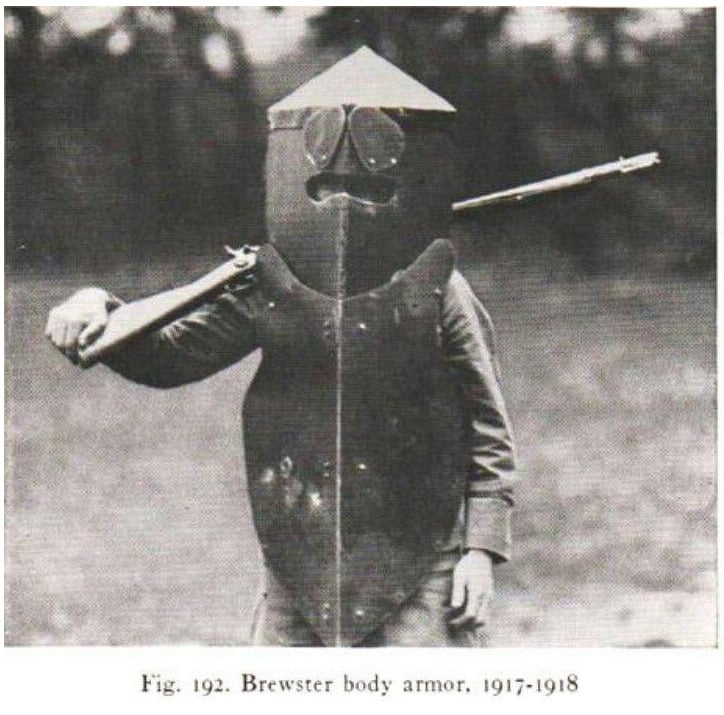
A bit of time passed from the stone fortress debacles of the 1300s to more tests being carried out during the somewhat contentious Thompson-LaGarde Tests of 1904. There are some who argue what Thomspon-LaGarde did has no real bearing on today’s bullets, but they’d be mistaken.
Those tests involved shooting live cattle and human cadavers and supplied much-needed information to our nation’s military about what their bullets could and couldn’t do (mostly what they couldn’t do, and those tests are why the .45 ACP enjoyed use until ballistics improved again decades later).

Then, in 1975, we had the National Institute of Justice’s Relative Incapacitation Index (RII). Even so, real advances were only being made in stuttering inches. Who knows if we needed better motivation or simply the overall improvements in technology that come with the passage of time, but it wasn’t until 1986 that things took a real turn ballistically and ballistic gel became a thing.
(Check out the Best Body Armor guide, too, if you’re interested in learning about defending your squishy bits!)
The turning point was the 1986 FBI Miami Shootout, a firefight involving eight federal agents against a pair of serial bank robbers.

During the gun battle, both robbers were shot repeatedly–and early on–but continued to fight, murdering agents. Interestingly, FBI Special Agent Jerry Dove used his Smith and Wesson 459 9mm to shoot criminal Michael Platt in the chest only to have the bullet stop penetrating less than two inches from his heart.
If that 9mm bullet had sufficient penetration the entire outcome would have been different. Yes, Platt eventually died from the shot fired by Agent Dove–it was just one of many bullets he was struck with–but he lived long enough to do serious, murderous damage.
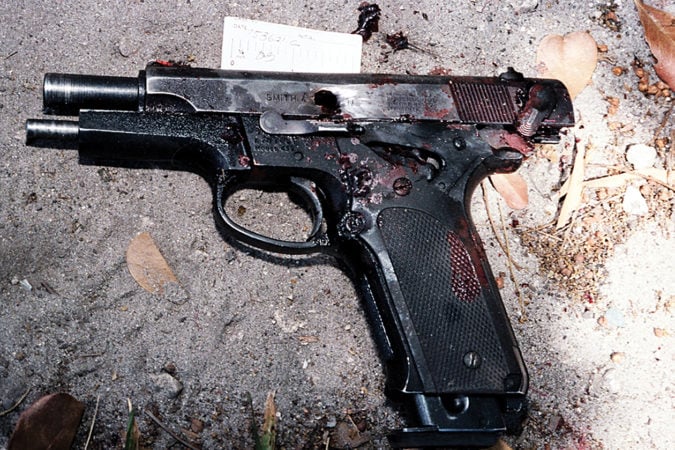
It took that blood on the ground to make the FBI realize the aforementioned RII wasn’t just inaccurate but fatally dangerous to trust.
Death was their final motivation, and so they put their minds to coming up with a more accurate testing method. That brings us to ballistic gel (if you’re interested in gun-related historical tidbits look up the privately-funded Strasbourg Tests which involved hundreds of large, male French Alpine goats, just for funsies).
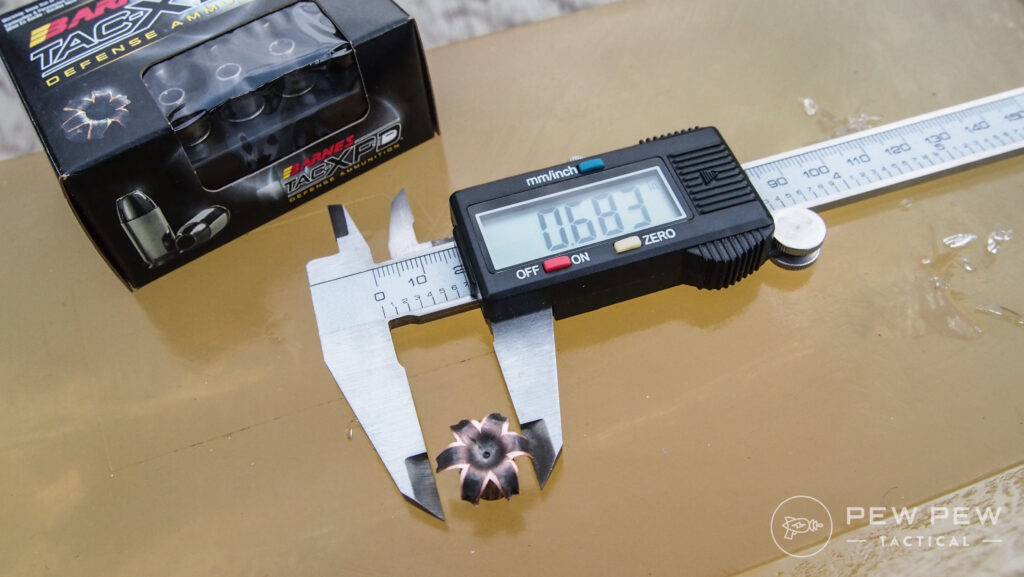
The Process
The FBI uses a strict protocol for ballistic gel testing which remains the industry standard (at least we can agree on how gel is mixed, right?).

The gel used is 10% ordnance gel which is created by mixing one part 250A bloom gelatin with nine parts warm water. What’s bloom gelatin? Bloom is a reference to a test created by Oscar Bloom back in 1925 that measures the strength of the gel.

A block with low bloom strength won’t be the right density to deliver accurate test results. Back before other methods were developed the FBI used to check bloom strength by firing a BB gun that had been pumped ten times into a block of ballistic gel. If the block had been made right the BB penetrated 3 ¼-3 ½-inches.
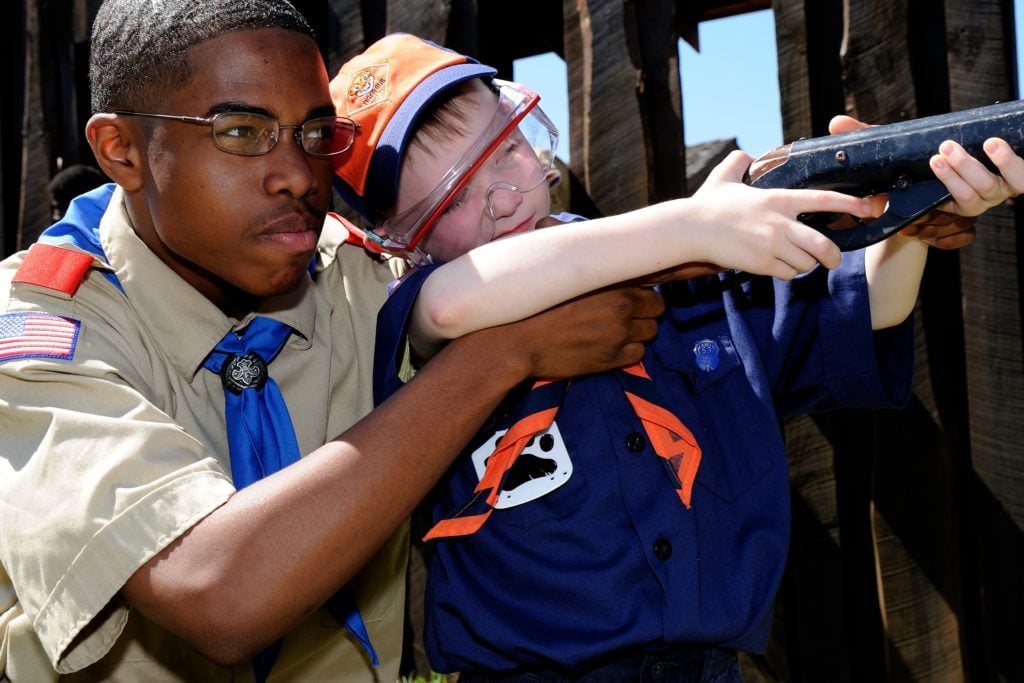
Today we have more scientific means of properly calibrating blocks. It isn’t just bloom considered, either; other important factors checked include viscosity, solubility, and consistency of density. Then, as if all that wasn’t enough, a finished block of ballistic gel has to be properly chilled to 39.2 degrees Fahrenheit.
And when you do take it out of the perfectly-calibrated cold storage unit you’d better use it within 20 minutes or less. If you don’t use it fast enough the gel heats up and breaks down, skewing your results.
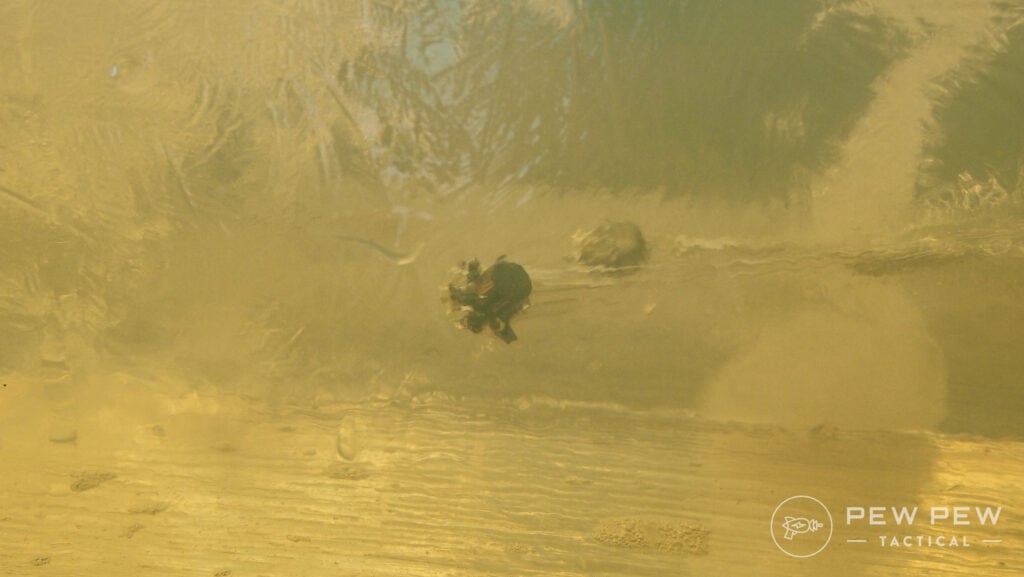
Yes, you’re going to see some self-proclaimed experts online directing shooters to make their own, cheap gel using Knox brand food-grade unflavored gelatin.
According to Knox the bloom strength of their grocery-store unflavored gelatin is something like 225–well, give or take 10. Using Knox gelatin is along the lines of close but not quite.

Sure, you can use that method, but it isn’t the greatest plan ever for accuracy. Want your ballistic tests to be up to FBI and industry standards? Use gel made for the job (Knox makes that too, by the way).
Always Protocol
Keith Porco, competition shooter and head of Sinterfire, Inc.’s New Product Development, says knowing the FBI protocol is an important detail for gun owners looking to further their ballistic knowledge.
Side note, Porco is a legit shooter. He’s captain of Sinterfire’s competition shooting team, a former Army Ranger, and a former law enforcement officer. “Every police officer and any person carrying a gun for self-defense should review the FBI handgun ballistic testing protocol,” Porco said. “It’s very important to know how well your [chosen] bullets perform.”
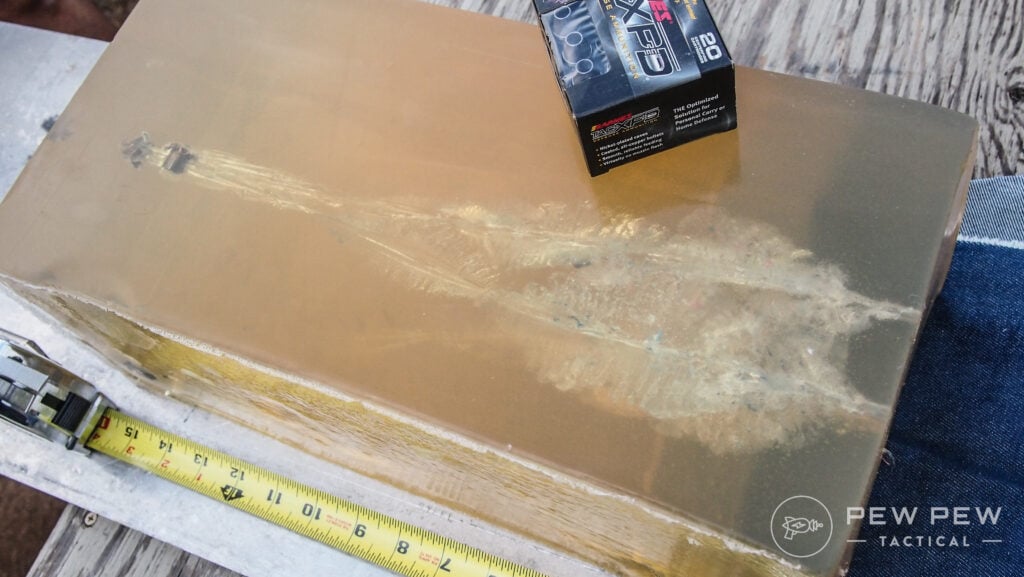
So, what does the FBI protocol cover? A lot of different details. It all starts with bare gelatin but the odds you’re going to face a buck-naked, stick-thin assailant directly facing you and not moving means there are other factors to consider.
For example, objects. The FBI shoots the following inanimate objects from 10 feet away with barriers staged 18 inches in front of the gel blocks: bare gelatin, heavy cloth like denim, automotive sheet metal, wallboard, plywood, and automobile glass (this one is set at a 45-degree angle).
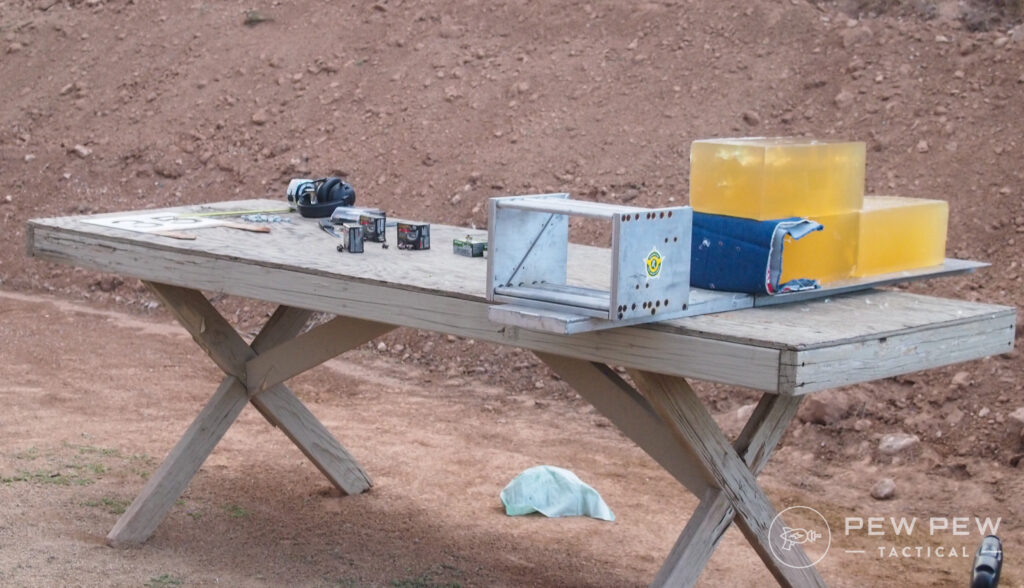
Lighter-weight cloth is used, too, like tee shirts. Those lighter cloths and automobile glass, again, are shot from 20 feet. If you’re the FBI you’re using specific materials, too, like ¾” AA fir plywood, not just some random hunk of wood you pulled off a scrap pile.
The whole point of specific materials being used is for consistency in testing. In the original protocol, Ransom Rests were also used to remove human error while shooting and agents measuring results in the blocks weren’t told what caliber or gun model was used in an attempt to avoid bias.
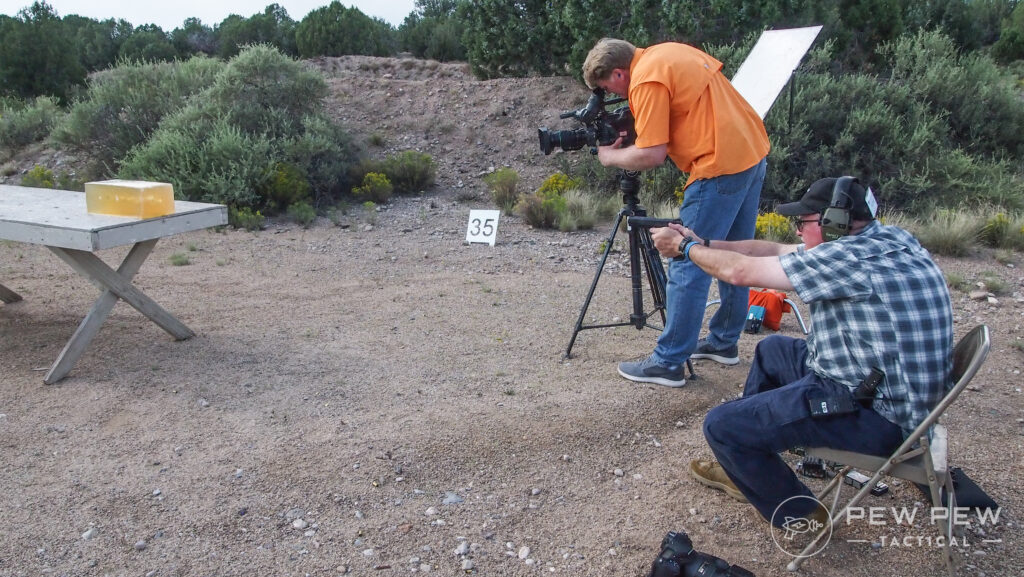
As you’d expect, the caliber of the bullet and the barriers in place make a big difference. The FBI considers a penetration depth under 12 inches a failure and any penetration over 18 inches to demonstrate an over-penetration risk (yes, it matters).
Bullets prone to over-penetrating present a much greater risk to innocent bystanders, and anyway wouldn’t you prefer your self-defense ammo expend its energy in its target rather than keeping on its merry way?
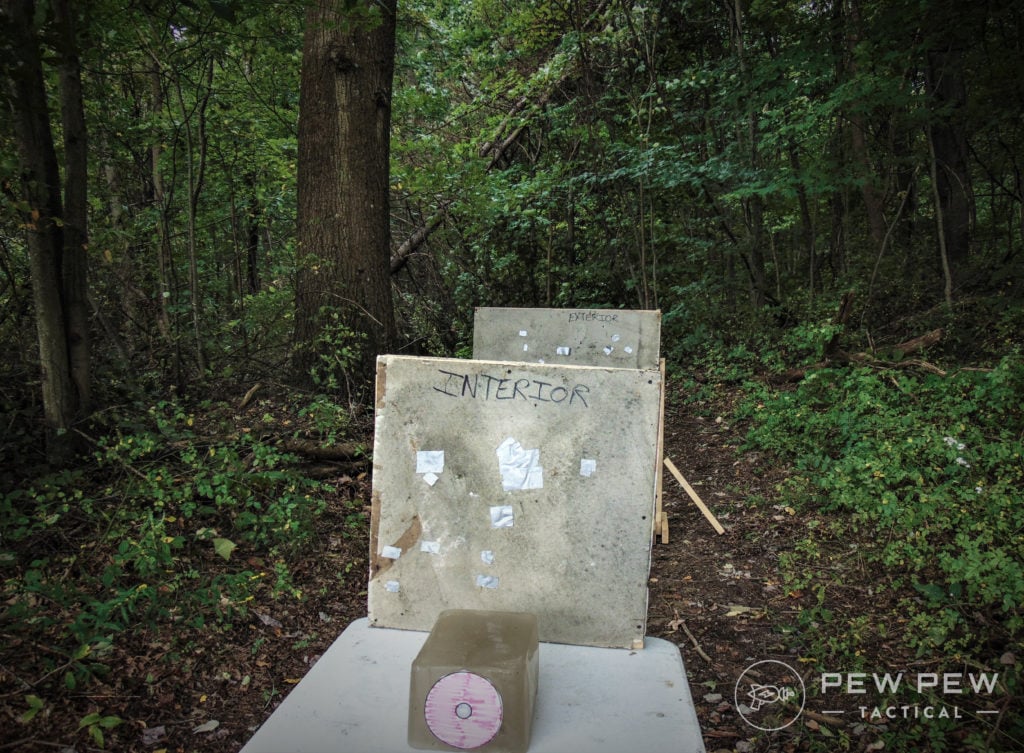
Right from the beginning, the FBI’s ballistic testing results were in stark contrast to the 1975 RII’s postulations that six to eight inches of penetration were plenty. It isn’t just about penetration depth, either.
The bullets themselves are measured and weighed for expansion and weight retention. Chronographs are also often used during testing to get a velocity reading at the same time.
But wait, there’s more (there’s always more): adjusted volume.
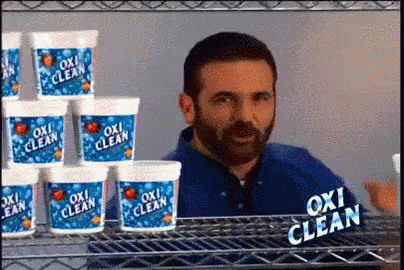
Adjusted volume has to do with the volume of the wound channel measured in cubic inches. Measuring this gives you an idea of a bullet’s permanent wound cavity potential which is a nice detail to have when deciding if a bullet is capable of performing for self-defense purposes.
If we’re going to get really basic we’ll say there are two physical means by which a bullet stops a threat: central nervous system disruption and significant blood loss.

When you’re familiar with the penetration depth and cavitation potential of specific bullets you have invaluable information. Not only can it help you choose your self-defense ammunition, but it can also help you decide on an EDC if you’re in the market for a new handgun or own more than one (you do own more than one handgun, right?).
Face it, there’s a point where you’ve watched a bunch of .380 ACP halt abruptly around seven and nine inches of penetration in bare gel–it didn’t even have barriers to penetrate first–that you might start to question whether .380 ACP really is a good plan. Just saying.
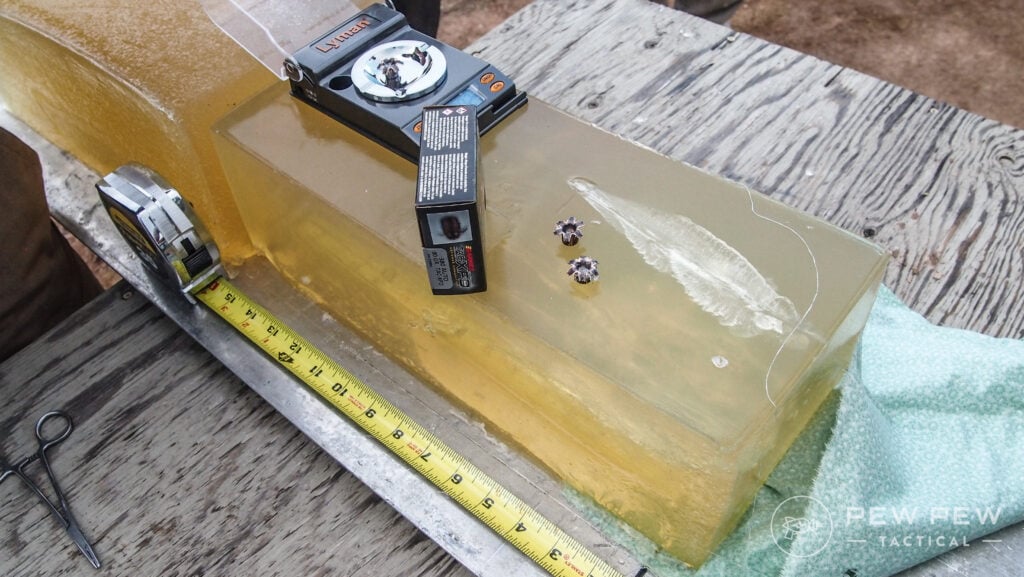
When ballistic gel testing is done right, whether by the FBI or a manufacturer or by you yourself, it gives you valuable information. Porco explained it by saying “The FBI testing protocol will help you understand how bullets penetrate, expand, and fragment as well as how all factors of the test media affect penetration.”
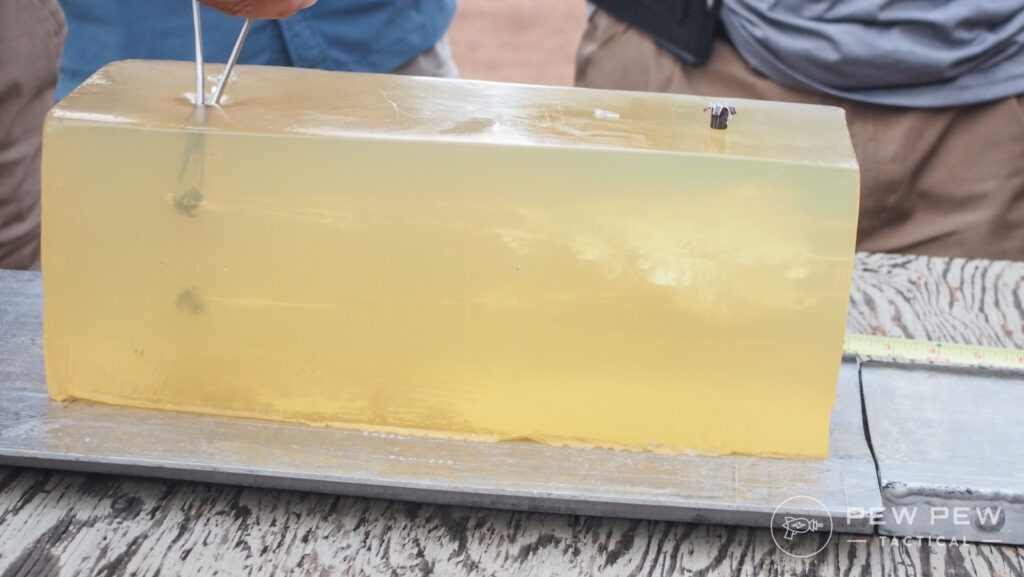
You’re counting on your EDC to save your life, aren’t you? Wouldn’t it be useful to know if it could perform as hoped before the moment comes?
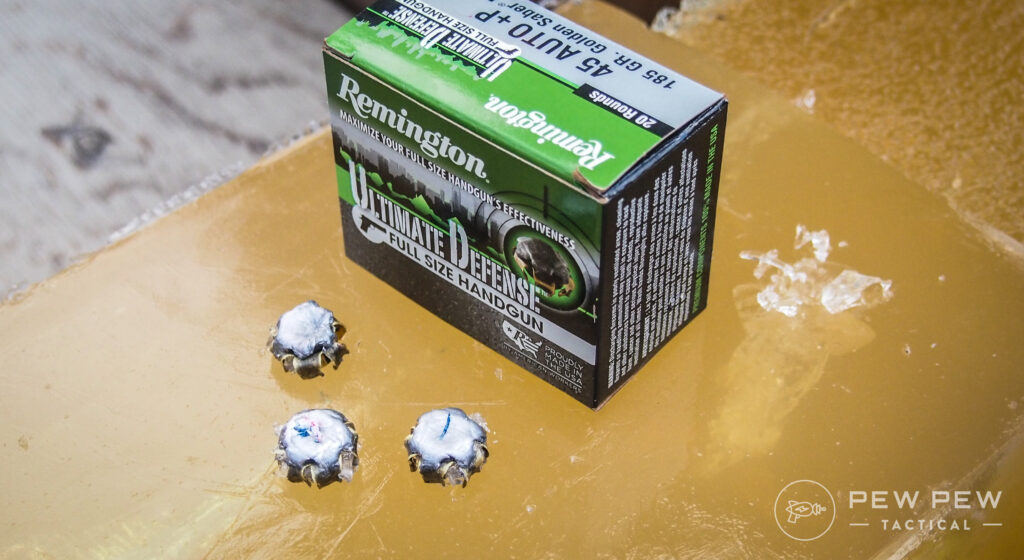
Recommended Ballistic Gels
While you can make your own ballistic gel, it’s not always the easiest option–or the most accurate one! Here’s some recommended gels to get you started.
1. Clear Ballistics Gel FBI Block
If you’re looking to test handgun ammo, this is where you wanna go. Obviously, the FBI gel block is made to the FBI ballistics gel standards, but it uses synthetic gelatin, so there’s no need to keep it chilled–and also it doesn’t smell, which is pretty cool.
This block is intended for penetration that is less than 16″, so it won’t play nice with high-powered rifle rounds.
Prices accurate at time of writing
Prices accurate at time of writing
-
25% off all OAKLEY products - OAKLEY25
Copied! Visit Merchant
What it is, though, is crystal clear for those sexy ballistic gel photos. Gotta put that on your Insta!
2. Clear Ballistics Gel Long Range Block
Going the distance? You’re going to want the Gel Long Range Block. These blocks are made for ammos that penetrate more than 16″. It’s a full 20″ long, so you have a little more wiggle room on penetration, but don’t forget that you can also line up multiple blocks if you need more depth.
Like the other Clear Ballistics gels, it’s odorless, colorless, and doesn’t need mixing, cooking, or chilling. It makes all your ballistic gel dreams just that much more accessible!
Prices accurate at time of writing
Prices accurate at time of writing
-
25% off all OAKLEY products - OAKLEY25
Copied! Visit Merchant
The Flip Side
No, you should not worship at the altar of ballistic gel. All ballistic answers do not begin and end with a block of gel.
Today there are other types and percentages of gel being used, there are tests involving pig cadavers, and there are a ton of different methods for testing performance.
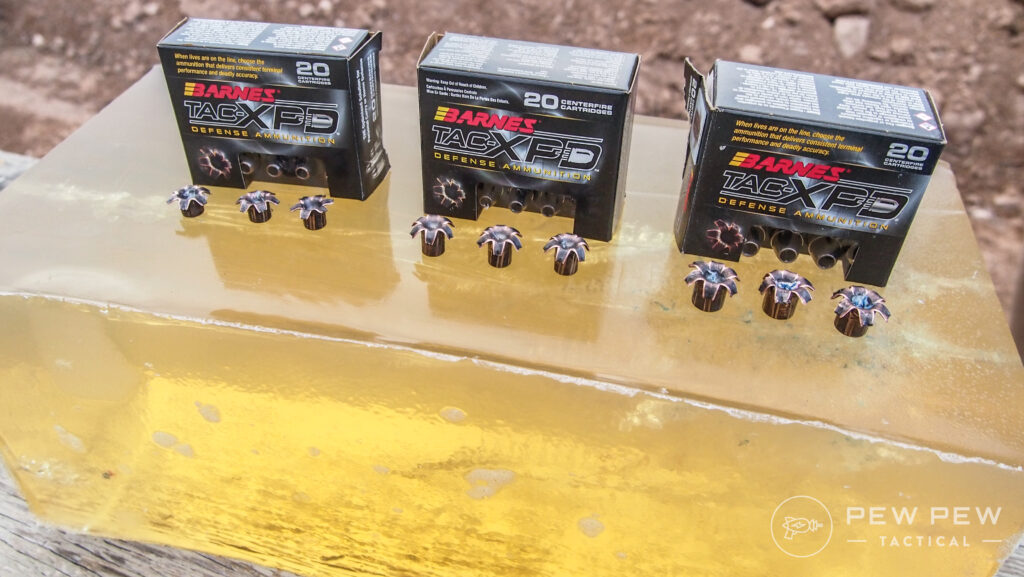
It’s wiser to take multiple testing results into consideration rather than relying on ballistic gel alone. Yes, ballistic gel is a good testing medium and the results should be factored into your gun choices, but make sure you do your homework beyond a single type of gel test.
The Wrap Up
From a ballistic standpoint, things have changed a lot over the years, even in the last ten years–even the last five.
Things are always changing and advancing and we’d be crazy not to follow the latest technology and its applications in ammunition.
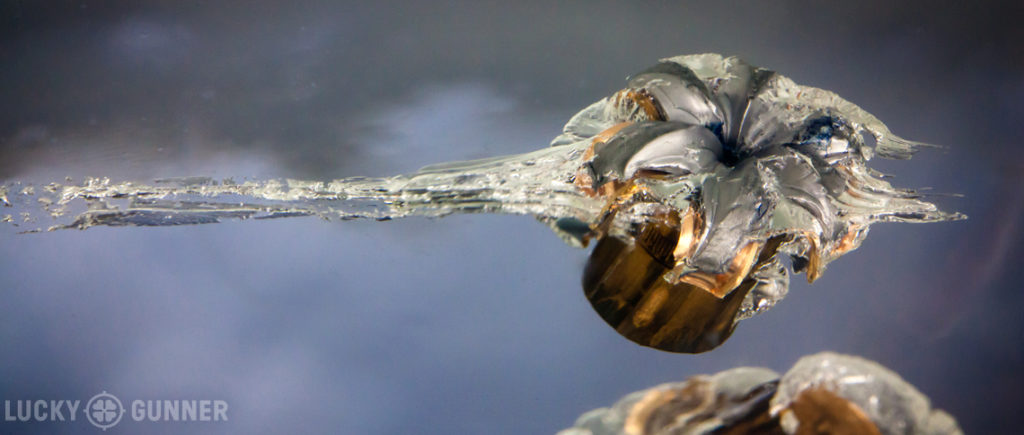
It’s well worth the time and expense to do a little ballistic gel testing of your own (plus it’s fun). Learning about these things is all part of being a well-rounded, educated gun owner. Get out there, mix up some gel, and shoot it. Why not?
Have you used ballistic gel for testing before? How did it go? Want to try it? Tell us about it in the comments! And if you’re interested in this, check out our Home Defense Over-Penetration Testing study!

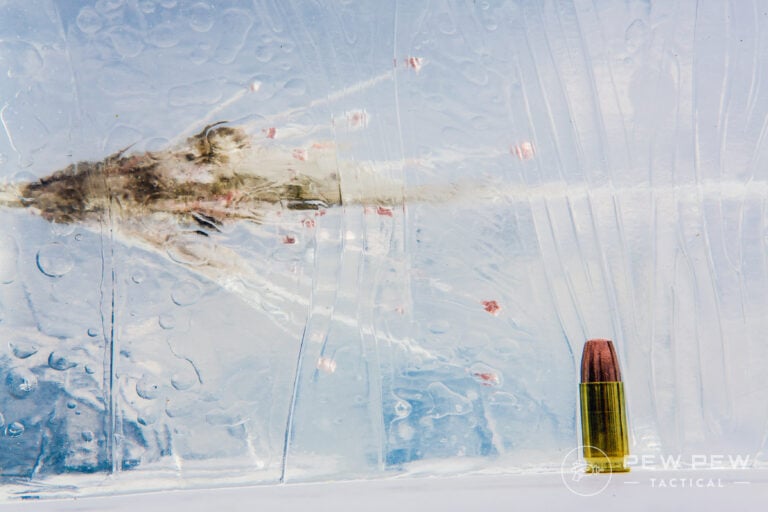
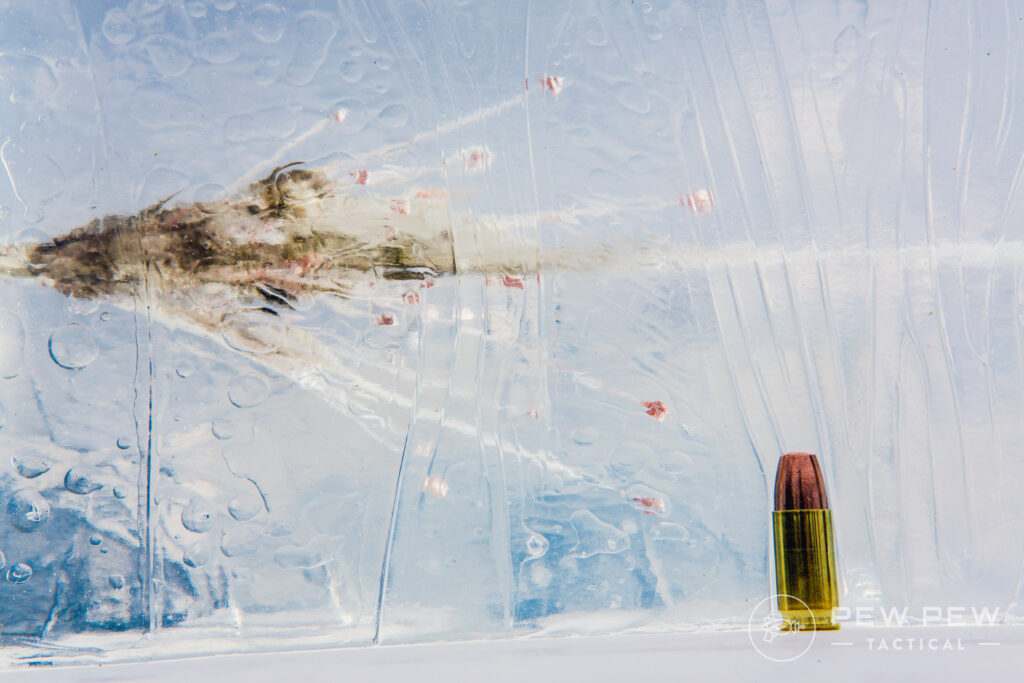






3 Leave a Reply
Can the cited clear ballistic gel be re-melted and recast without loss of integrity?
Seeing the gif of the cow running reminds me of Johnny B.
Drama Brahma! Spicy spice!
Take a tip from the FBI and buy the ammo they have bought for their agents:
I.e.:
Federal Premium HST
Winchester PDX1
Speer Gold Dot
Also, that Sinterfire ammo the author plugged is junk. It fragments alright, but it doesn't penetrate or expand for crap. Maybe guess military experience is better than I thought for producing hucksters.
Check LuckyGunner.com under their Labs section to find extensive data for many different rounds in many calibers that have been tested using FBI ballistic gel testing protocols. Their shows that no .380 hollow point round tested meets both of the FBI specs for gel penetration (12-18 inches) and expansion (1.5x = .53 inches).